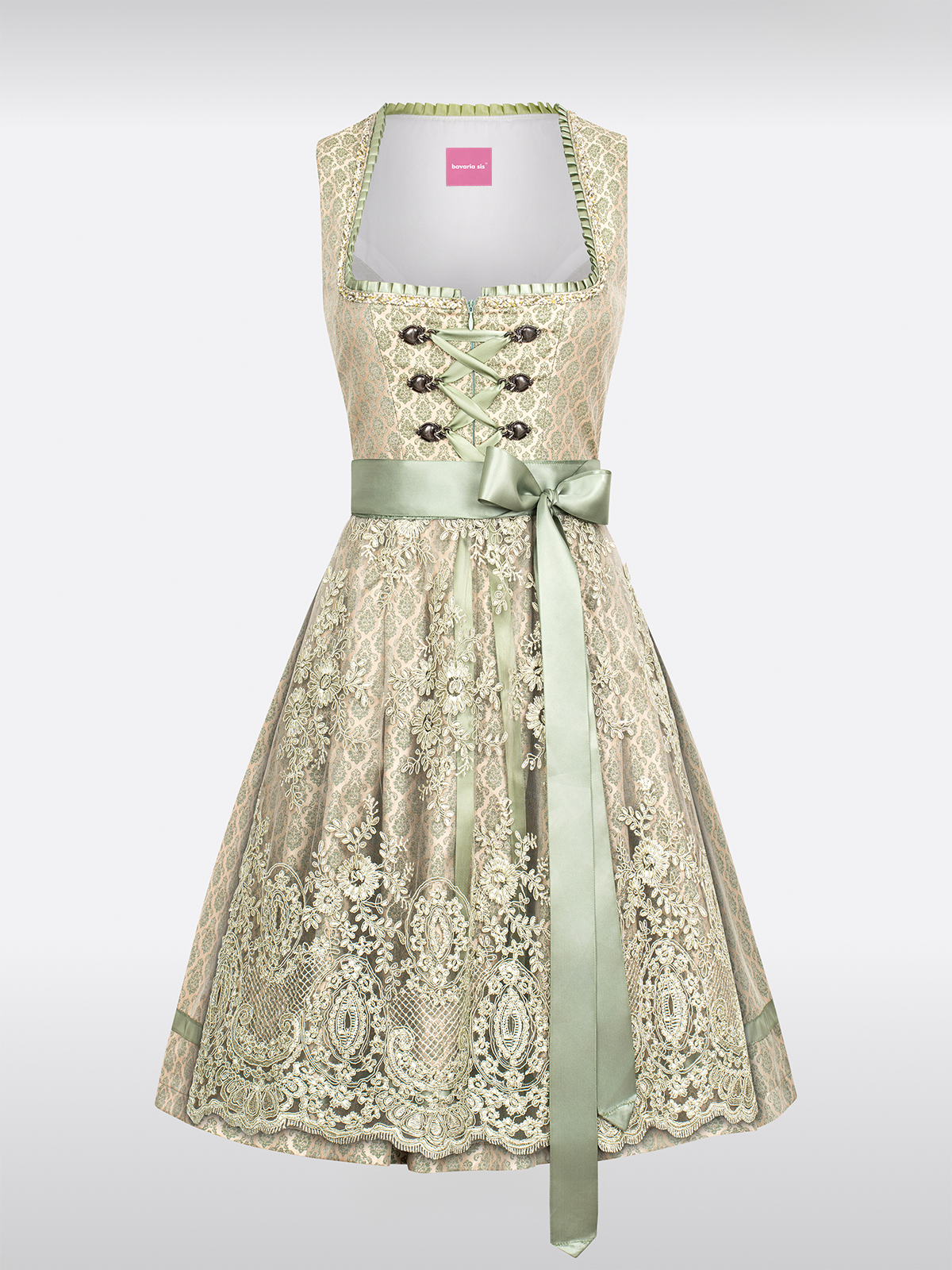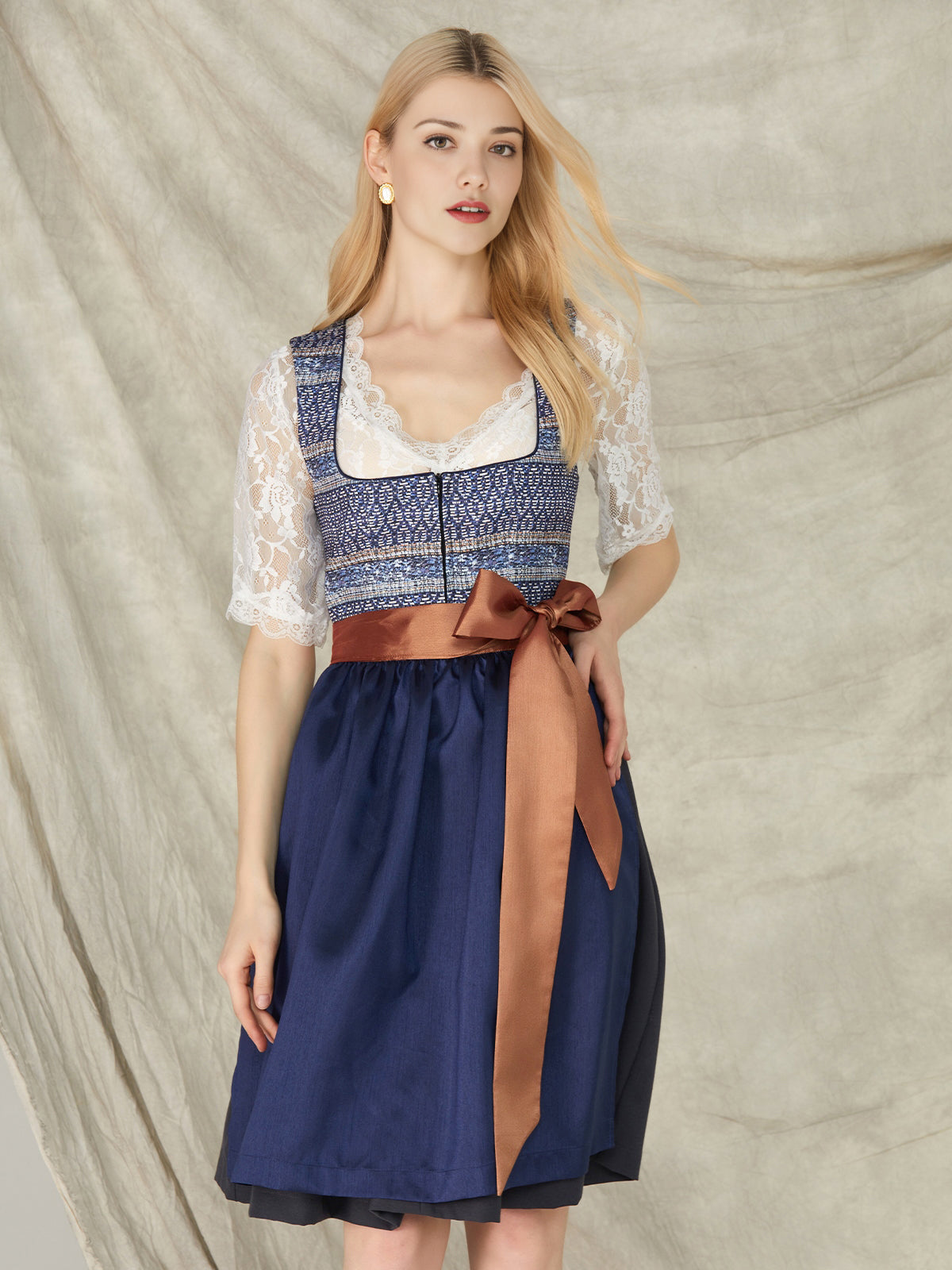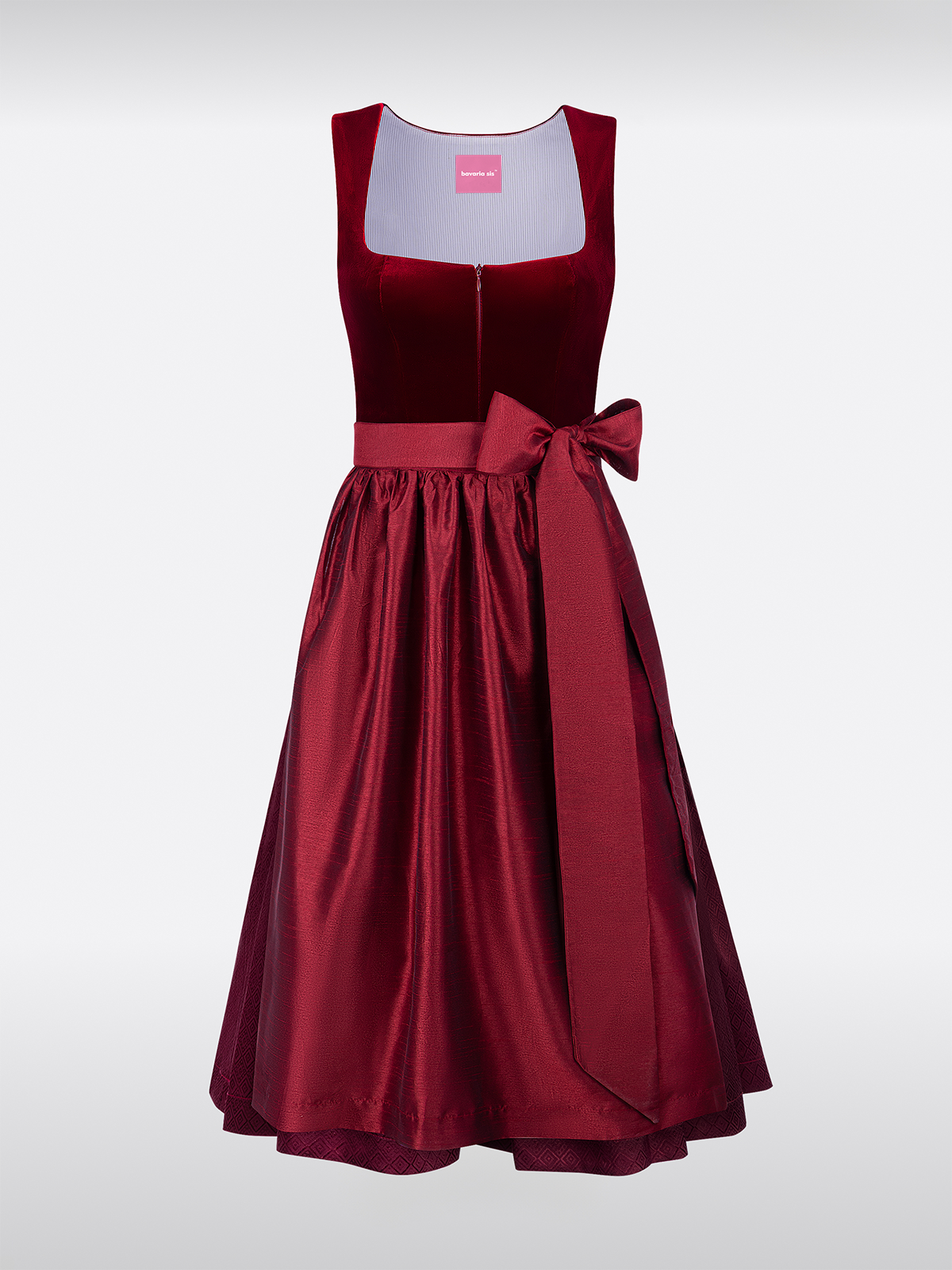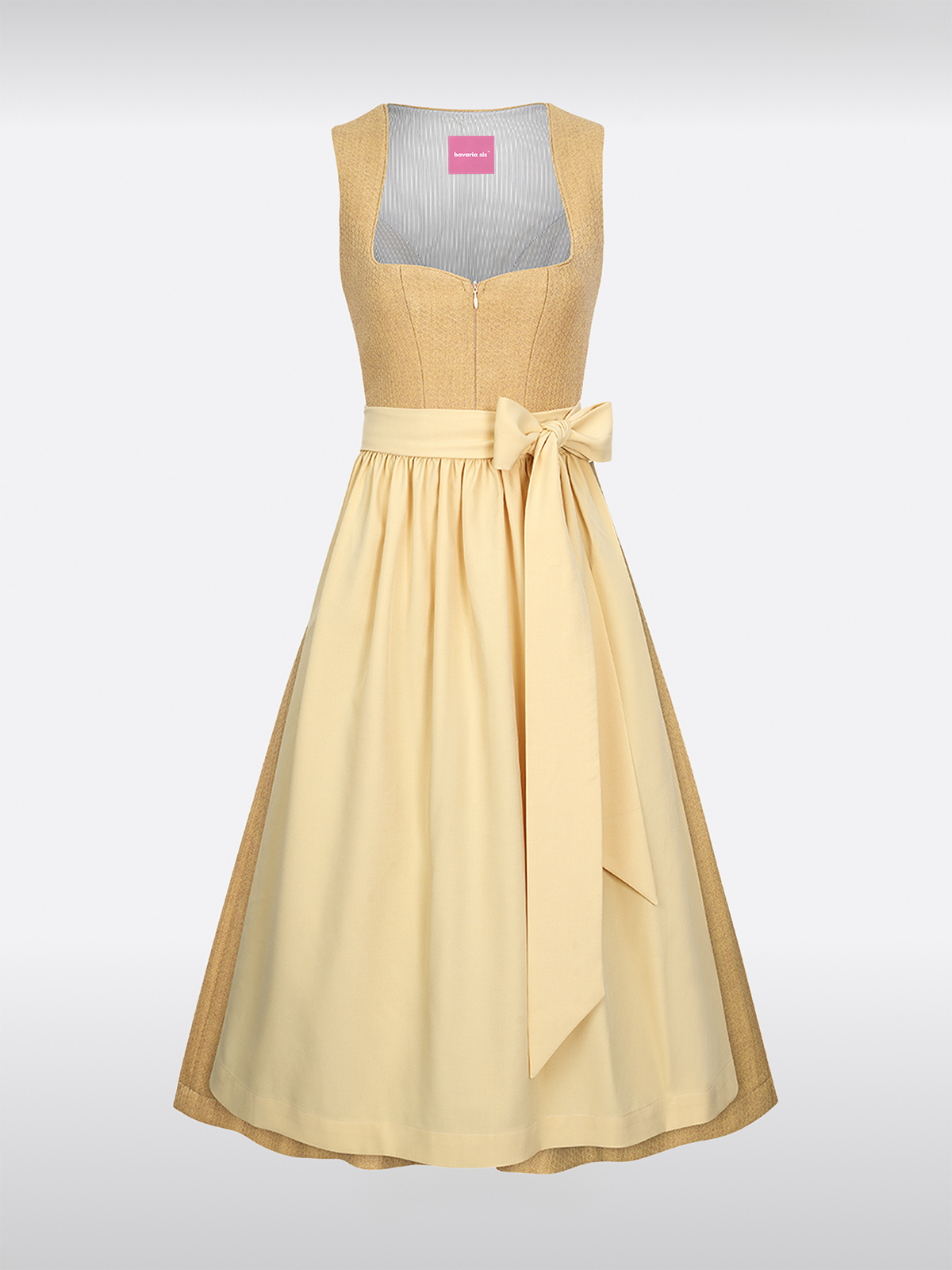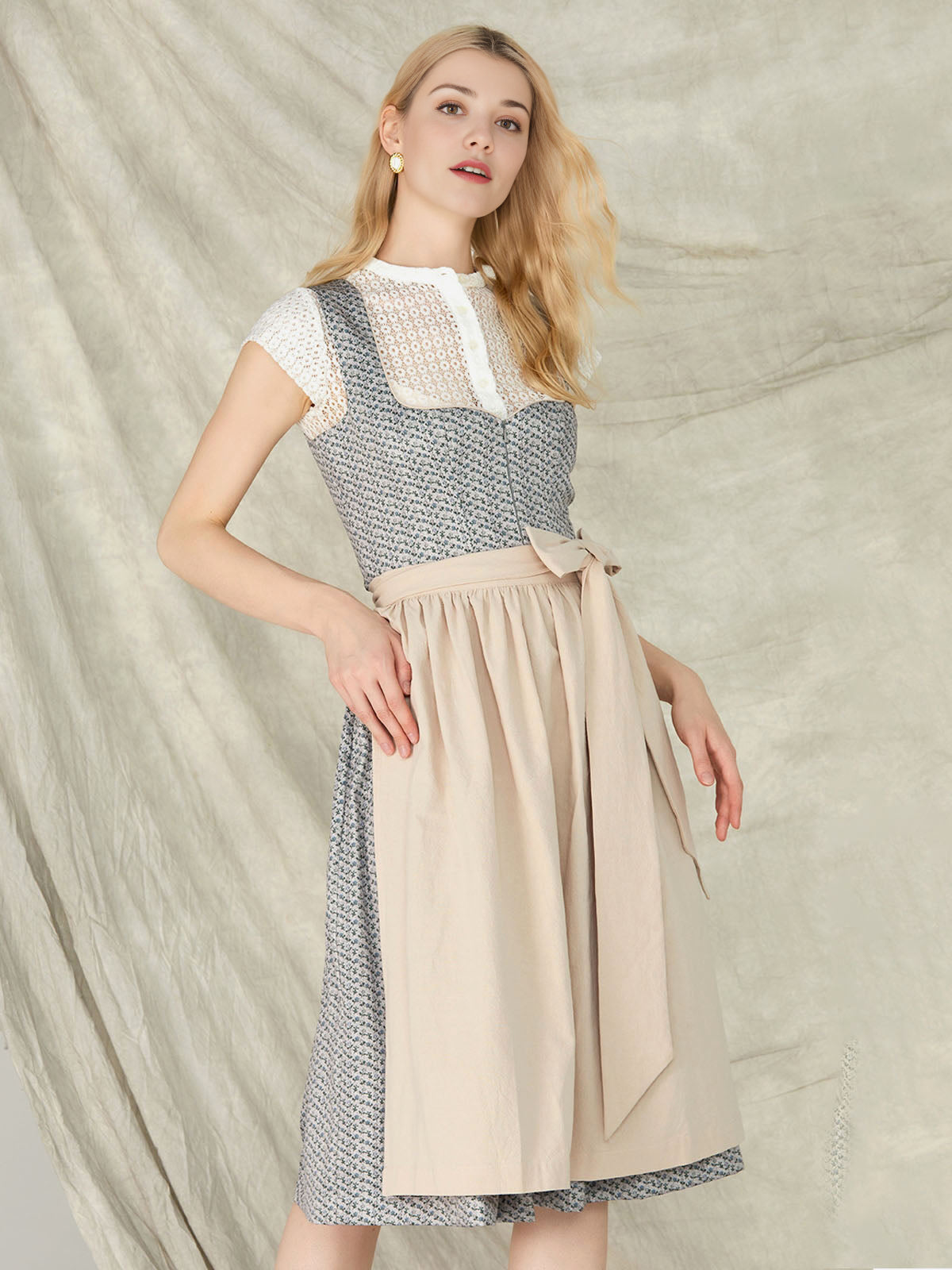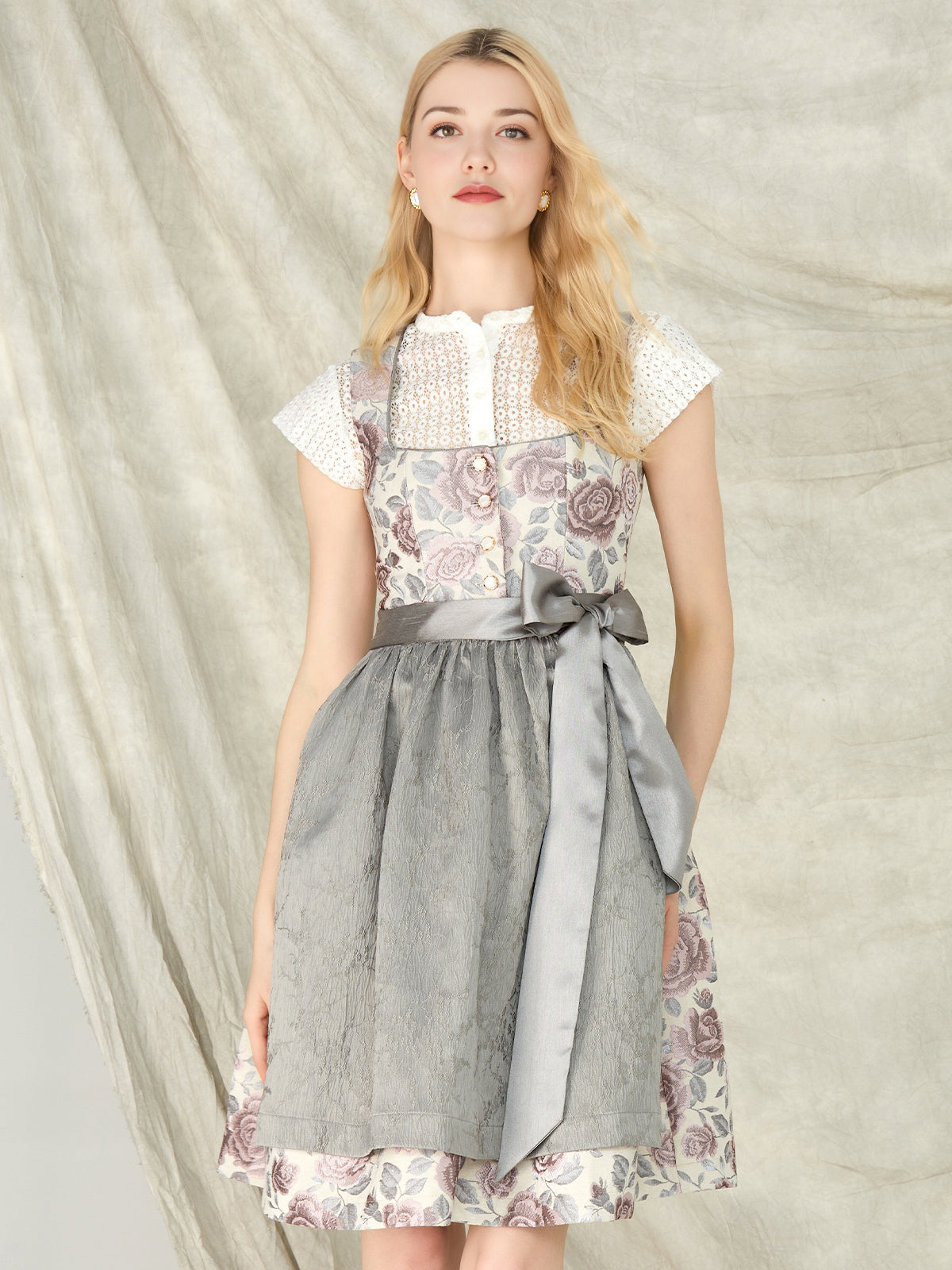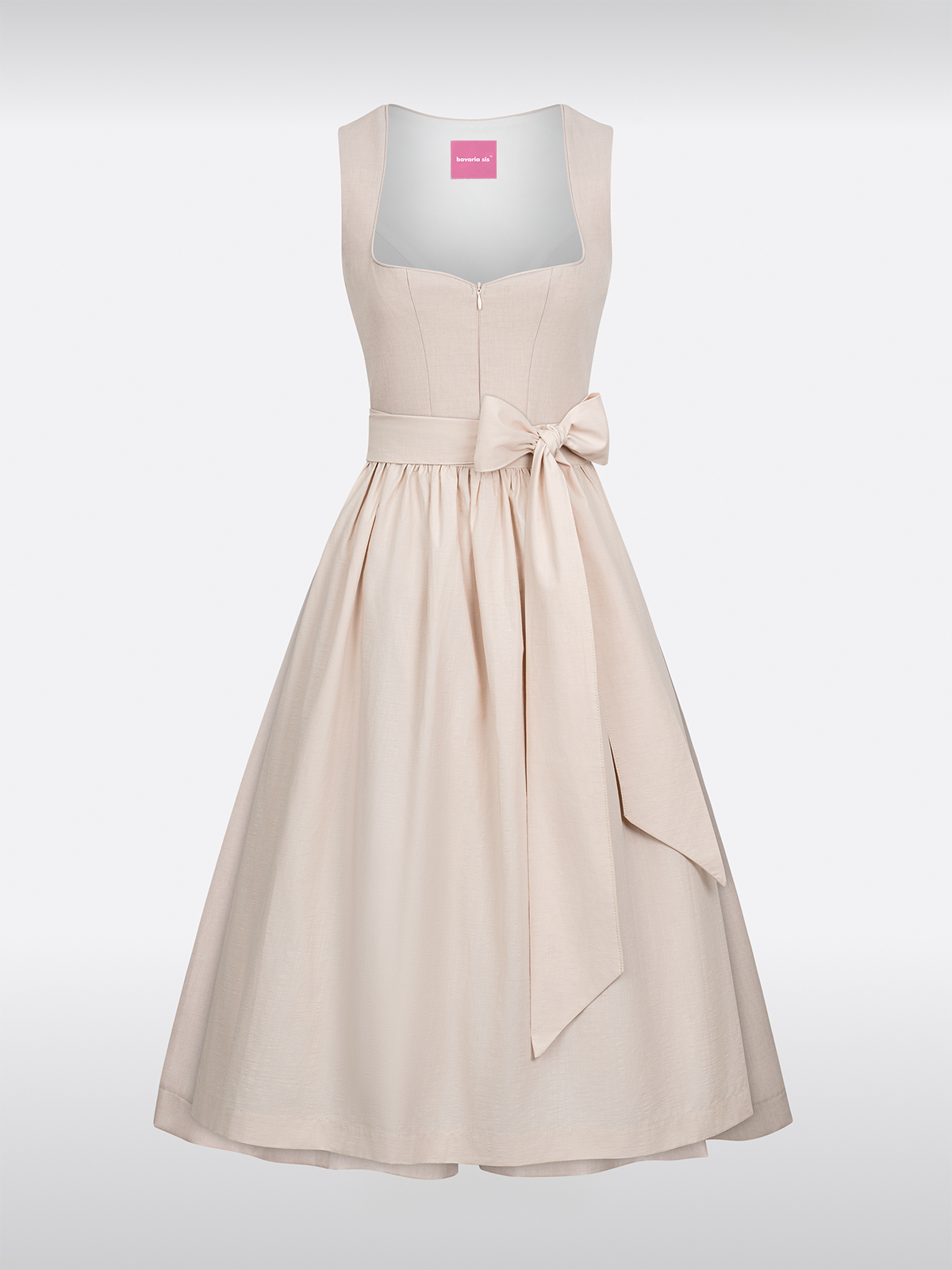Introduction: When blue is more than a color
In the Alpine countries of Germany and Austria, the dirndl velvet blue not just a piece of clothing, but a symbol of culture, identity and craftsmanship. Whether at the Oktoberfest in Munich or the cattle drive in Tyrol – the blue dirndl cheap To be able to buy a car is a dream for many women. But not every dirndl royal blue All are created equal. There are subtle but crucial differences between the original Bavarian form and the Austrian interpretation—and sometimes surprising twists that blur the boundaries between tradition and modernity.
Chapter 1: The Bavarian Original – Deep tones and robust elegance
Color palette: The king of shades
In Bavaria, the dirndl velvet blue in deep black-green or navy blue. These colors were not chosen randomly: they symbolize the nature of the Alps – the darkness of the spruce forests, the depth of the lakes. blue dirndl cheap in these tones is often made of wool-based fabric, which keeps you warm and is durable. The color dirndl royal blue is used less frequently here because it is perceived as more “festive” and less suitable for everyday use.
Design: Functionality above all
The Bavarian dirndl velvet blue follows a clear principle: Less is moreThe cuts are simple, with a high neckline and long sleeves that extend above the wrists in colder months. The apron is often made of plain fabric or decorated with minimalist patterns—a contrast to the Austrian style that will surprise you later.
A sudden twist: But what many do not know: In the 1920s, the Bavarian dirndl royal blue almost forgotten. Industrialization had labeled the traditional costume as “old-fashioned.” Only the post-war period and the rediscovery of regional identity brought the blue dirndl cheap back in fashion. Today it's indispensable – and not just in Bavaria.
Chapter 2: The Austrian counterpart – flowers, leather and a pinch of rebellion
Color as a statement: Dirndl royal blue as an eye-catcher
In Austria the dirndl velvet blue often worn in brighter, more vibrant tones. dirndl royal blue is not only reserved for holidays, but also for everyday occasions. The color symbolizes the clear skies above the Dolomites and the vibrancy of Austrian culture. blue dirndl cheap in Austria is often combined with contrasting elements – such as a red apron ribbon or gold buttons.
Design: Embroidery as an art form
The biggest difference lies in the details. Austrian Blue dirndls are often decorated with hand-embroidered roses or alpine flowers – a tradition dating back to the Habsburg era. The apron is not just an accessory, but a statement: It can be made of silk, trimmed with lace or sequins. And then there's the belt: Instead of a simple ribbon, Austrians often opt for leather – with massive buckles or even engravings.
An unexpected highlight: But the real innovation comes from Tyrol: Here, some women wear their dirndl royal blue with... a denim jacket! This blend of tradition and streetwear would be unthinkable in Bavaria – in Austria, it's a sign of self-confidence.
Chapter 3: Price and practicality – Where the blue dirndl cheap can be found
Bavaria: Classic and affordable
Anyone who blue dirndl cheap will find it in Bavaria.Mass-produced models made of polyester or blended fabrics often cost less than 100 euros. But beware: Unfortunately, the quality can often deteriorate. A handmade dirndl velvet blue made of pure wool easily costs three times as much – or more.
Austria: Luxury with craftsmanship
In Austria, the price segment is higher. dirndl royal blue With embroidery and a leather belt, the price starts at €200 and can go up to €800. But here, they invest in sustainability: Many Austrian studios work with regional materials and fairly paid seamstresses.
The unexpected comparison: A blue dirndl cheap from China, which is offered online for 50 euros, has a bad reputation in both Bavaria and Austria. Both countries rely on "originality" as a selling point – and condemn cheap imports as "cultural theft."
Chapter 4: The future of dirndl velvet blue – Tradition meets modernity
Bavaria: The return of the dirndl royal blue variant
In recent years, young designers in Bavaria have started to dirndl velvet blue Short sleeves, transparent fabrics, and asymmetrical cuts are now in vogue. But conservatives are sounding the alarm: "This is no longer traditional costume!" they complain. Nevertheless, these models sell well – especially among tourists who blue dirndl cheap as a souvenir.
Austria: The digitalization of traditional costume
In Austria, things are going one step further: A start-up from Vienna is now selling dirndl royal blue with integrated LED lights. The apron can be changed into different colors via an app – perfect for rave parties in the mountains. Critics call it "blasphemy," fans love it.
The final twist: And then there is the story of Maria, a 28-year-old graphic designer from Salzburg. She wore her dirndl velvet blue – in jeans and sneakers – to a job interview at Google in Munich. The recruiter, a Bavarian patriot, was initially skeptical. But when Maria explained how the dress represented her Austrian identity, she got the job. Moral of the story: Tradition is strong – but flexibility is priceless.

